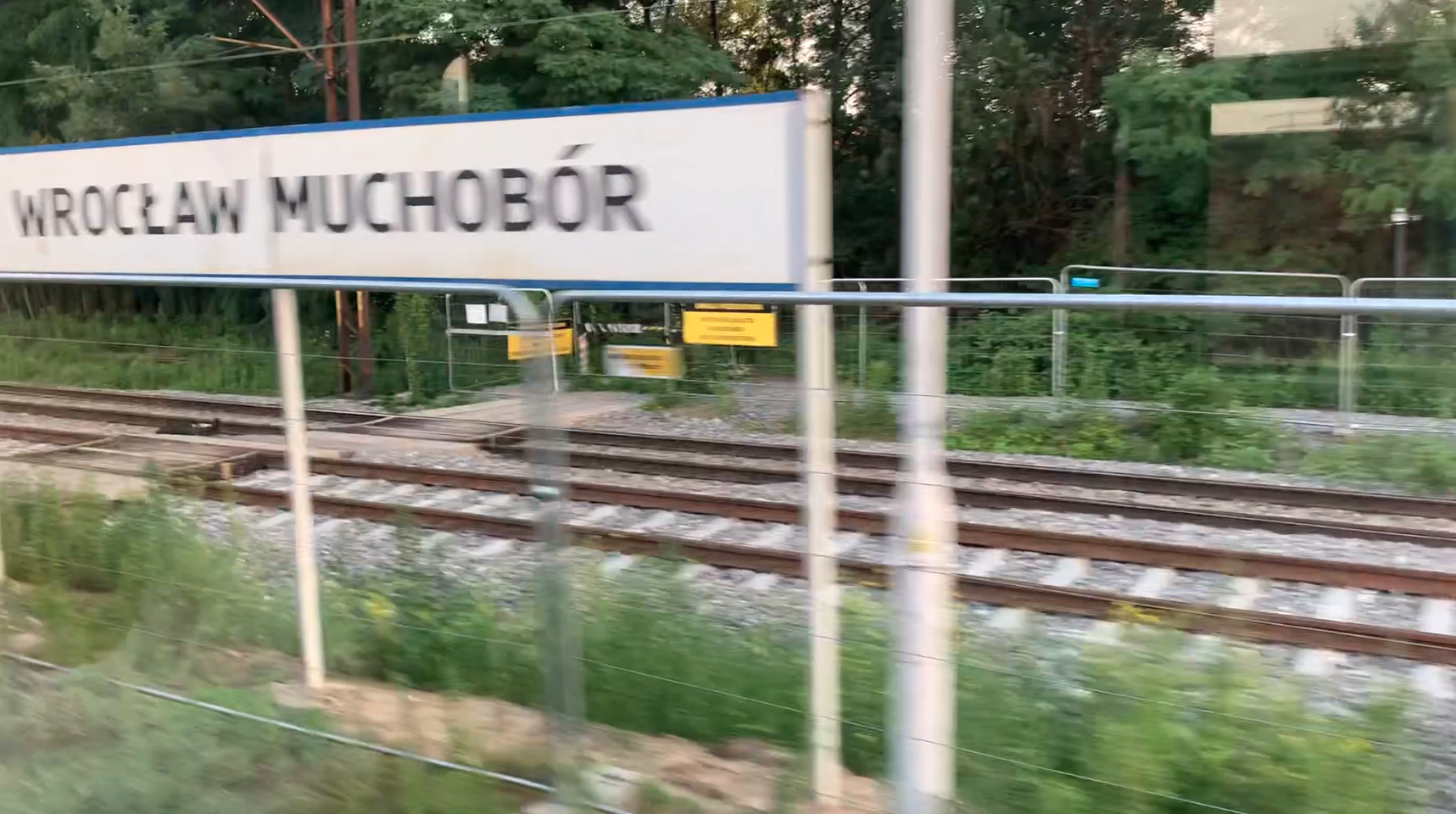Wrocław 2025-04-02
Wrocław Muchobór.
Muchobór is a historical district of Wrocław, which is currently divided into Muchobór Wielki (on the western side) and Muchobór Mały (on the eastern side). The name Muchobor, without distinguishing Wielki and Mały, was first mentioned in 1155. The name comes from a combination of two Polish words: insect “muchy” and “boru”, coniferous forest and means a forest full of flies. Its history dates back to the Middle Ages, when it was a settlement. In the 19th century, it was an agricultural settlement that supplied agricultural produce to Wrocław. Even in the 19th century, the Polish population lived here, and the Polish name of the village was used in parallel with the Germanic one. In 1937, due to the Polish origin of the name, the Germanic administration changed the name to a new, entirely Germanic Lohbrück. The proper development of the settlement took place after World War II, when Wrocław was incorporated into Poland, by decision of the greats of this world. The special features of this settlement are: industrialization, large housing estates and a developed road and rail network.
In 1845, it was recorded that the settlement had 445 inhabitants, including 135 Catholics and 1 Jew. There was a Catholic and Protestant school, a customs house, a windmill, a brewery, a distillery, a brickyard and a home for the poor. Animal breeding was developed; 850 sheep and 187 cattle. In 1912, there were already over 2,000 inhabitants here.
The first railway line in the town appeared in 1843. In the 19th century, the construction of the railway line encouraged settlement and industrialization. At that time, the division into Muchobór Wielki and Muchobór Mały (closer to the center of Wrocław) took place. Muchobór Mały was incorporated into Wrocław in 1897, and Muchobór Wielki in 1951. After the Second World War, Muchobór Mały developed as housing estates with single-family housing. From the 1960s, housing estates with multi-family housing began to be built; apartment blocks. In the 1990s, shopping centers, educational and health care facilities began to be built. Road infrastructure began to develop. In 2017, the population of the Muchobór Wielki estate was 12,213 residents. In 2022, the population of the Muchobór Mały estate was 7,586 residents. Currently (2025), Muchobór is a popular location for living, well connected to the center of Wrocław, both by public transport and rail.
Railway in Muchobór.
The history of the railway in Muchobór (both Mały and Wielki) is an important element of the development of this part of Wrocław. The first railway line near Muchobór was built in 1843. In the period 1845-1946, the Wrocław – Gubin railway line was built, which was routed through Muchobór. It was a route that connected Lower Silesia with Brandenburg; Dresden, Leipzig and Berlin. Since its opening, the Wrocław Muchobór station played an important role in the transport of goods and passengers. Many goods that were produced in neighboring factories were transhipped here. From the station there were sidings to these plants and warehouses. Gradually, the station lost its importance, because the Wrocław Gądów station, located only 0.5 km to the north, took over the freight transport. It was at the Wrocław Gadów station that the marshalling yard was built. Currently (2025) Wrocław Muchobór station is located on the E-30 line (Przemyśl – Kraków – Katowice – Wrocław – Legnica). On both sides it still leads to our enemies.
When Wrocław was incorporated into Poland, Wrocław Muchobór station was transformed into a passenger station. Two new platforms were built and the tunnel under the tracks was modernized, adapting it to serve passengers. Local and long-distance trains to Legnica and Zielona Góra stopped at the station.
In Poland, after 1989, the importance of rail passenger transport began to decline. Many people switched to their own cars. But there was also a conscious liquidation of rail connections, railway lines and even railway stations. Due to underinvestment in the railway infrastructure, train travel times were extended. Wrocław Muchobór station became a passenger stop, where a few local trains stopped, mainly operated by EZT EN-57.
Only since 2015, there have been actions aimed at eliminating the transport exclusions of people living in smaller towns. Especially in getting to schools and workplaces. On December 28, 2007, a company called Koleje Dolnośląskie was established. The owner of the company is the Lower Silesian Voivodeship. The company was established by a resolution of the Lower Silesian Voivodeship Assembly. In Poland, they were established as the second after Koleje Mazowieckie.
Wrocław Muchobór Railway Station.
PKP Wrocław Muchobór Address: Traktorowa Street 54-425 Wrocław. Geographic coordinates 51.111 N 16.974 E. Elevation 121 m.
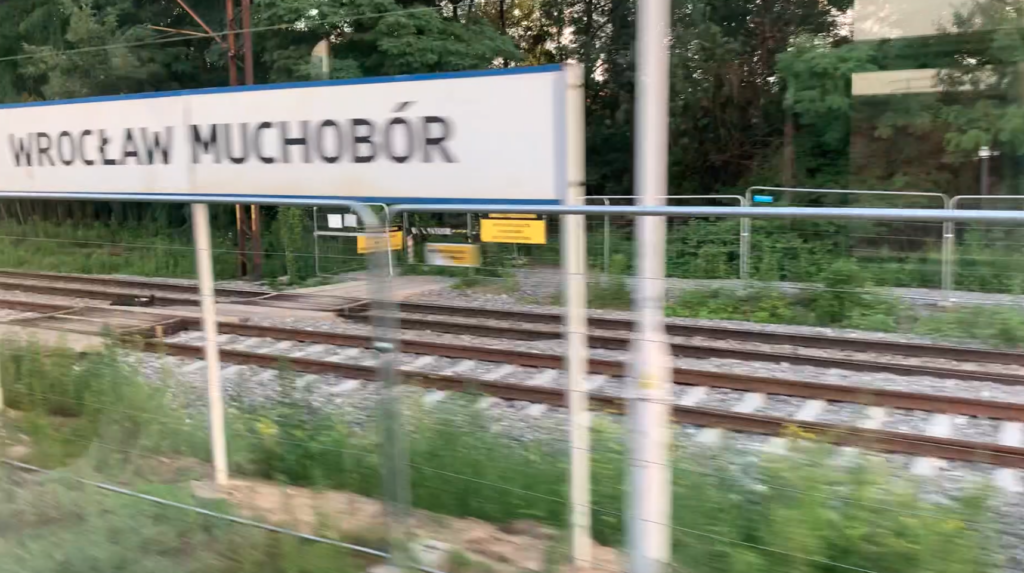
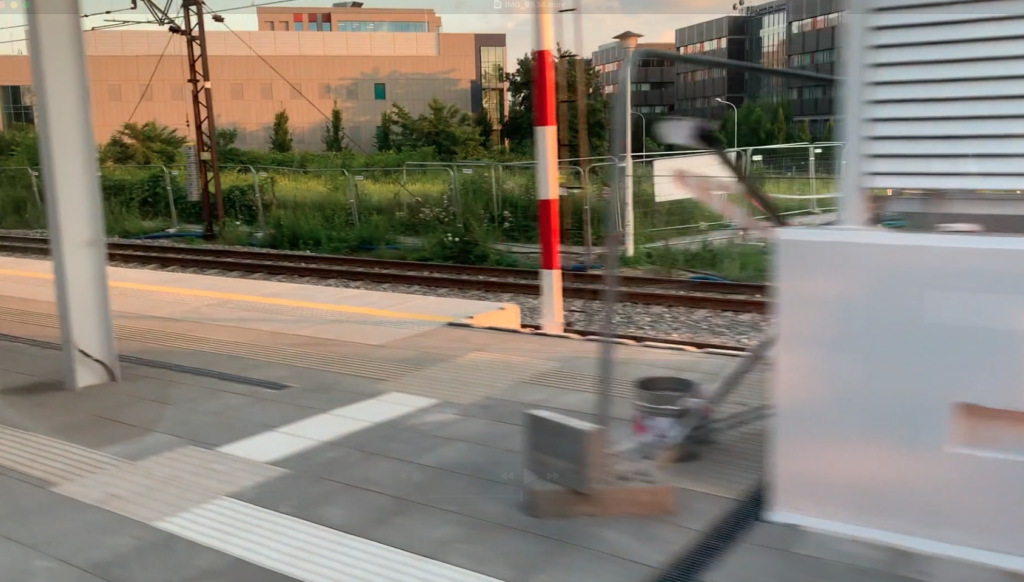
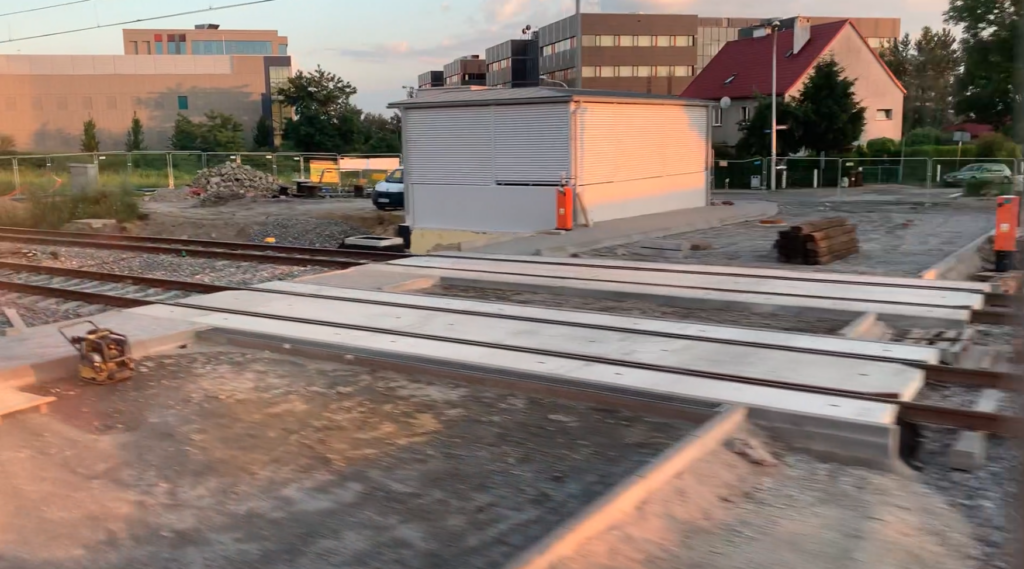
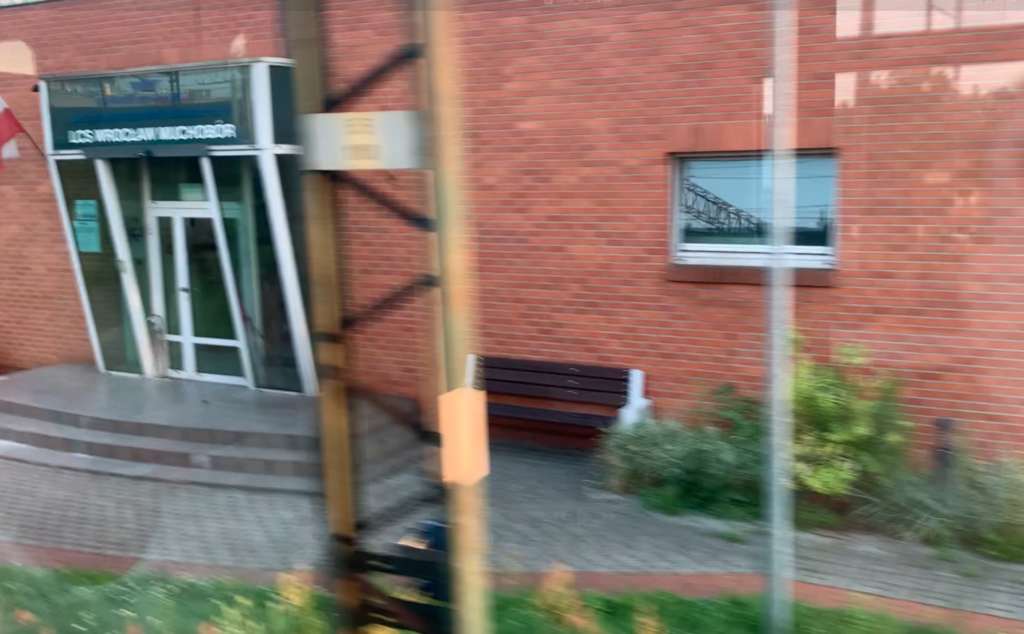
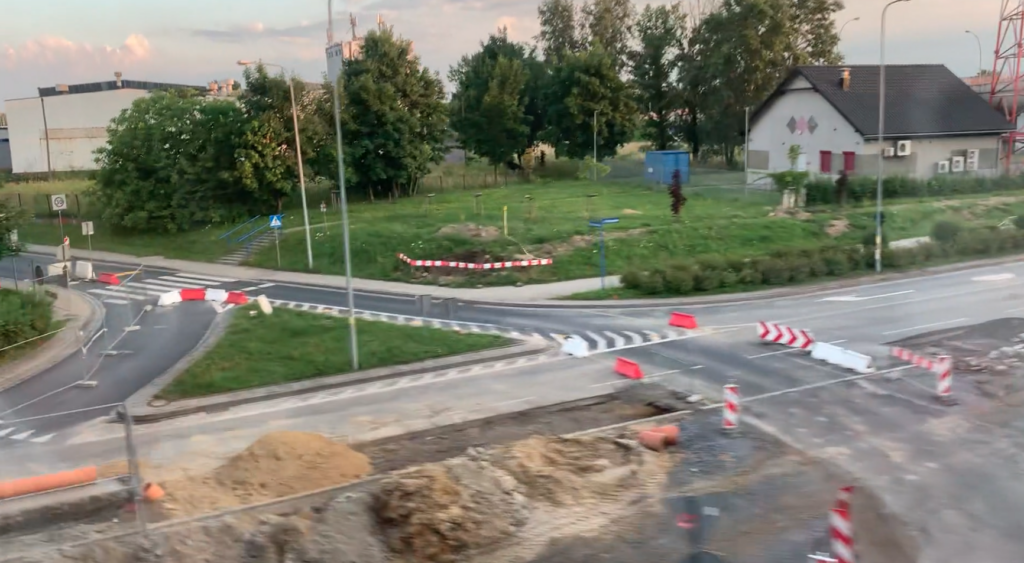
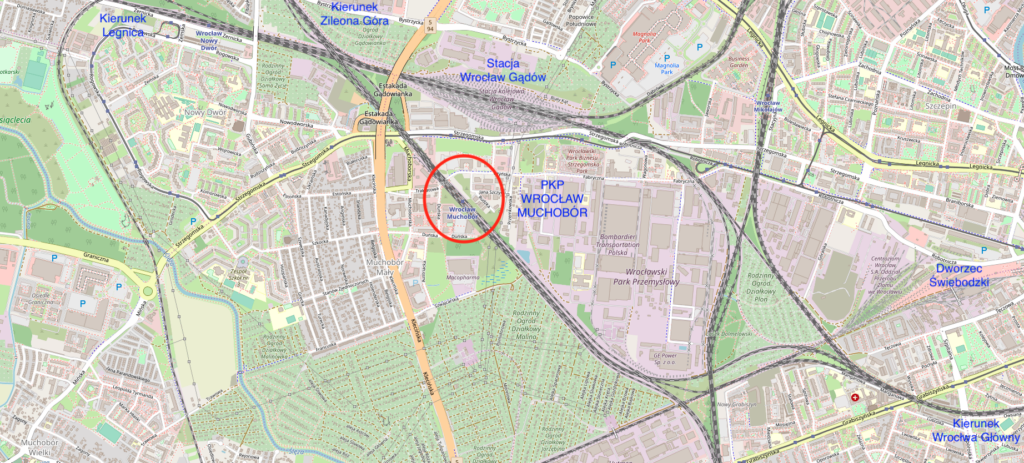
Wrocław Muchobór is a railway station in Wrocław, on Treaty Street in the Muchobór Mały housing estate. The station is located at the intersection of railway lines No. 273 and 275. Only passenger trains of the Lower Silesian Railways and PolRegio trains running on these lines to Zielona Góra and Legnica stop at the station.
The station was built in 1874. At that time, it was called Klein Mochbern. Passenger traffic was launched after 1900. Presumably in 1928, the name was changed to Breslau-Mochbern. On August 27, 1945, the station received the Polish name Wrocław Muchobór Osobowy. On May 1, 1953, the station received its current name Wrocław Muchobór.
The first station building, built in the Germanic style, was destroyed during World War II. There were also railway warehouses, sidings, a wagon scale, and a wagon gauge. There were shape semaphores, but during electrification, light semaphores were installed.
Currently (2025) only Koleje Dolnośląskie passenger trains and PolRegio trains stop at the station, running on these lines towards Zielona Góra and Legnica. For about 10 years, the station has served about 700-1000 passengers daily. Except for the drop in 2020, due to the Chinese virus pandemic. This is where the Wrocław freight bypass begins. There are four stations in this area; Wrocław Muchobór, Wrocław Gądów, Wrocław Nowy Dwór and Wrocław Zachodni. Within the Wrocław Muchobór station there is the Local Control Center, which was launched in 2011.
In the period 2020-2022, the Wrocław Muchobór stop was thoroughly modernized. Two high platforms, each 200 m long, were built. A 60 m long roof was installed on the platforms. Until now, there was no roof on the platforms and only single metal stop shelters stood. Audio and video railway information systems have been installed. The platforms have modern lighting. Access to the platforms from both sides of the tracks is provided by a renovated tunnel, where in addition to stairs, there are lifts. Lifts have been installed for disabled people, those with large luggage and bicycles. The station has a tactile and Braille signage system. Access is from Otyńska and Traktorowa streets. Currently, there are two platforms at the station; Platform 1 is an island, but with a single edge and is located on the eastern side. Platform 2 is an island and has two edges, on the western side. Both platforms are 200 m long and are of the high type. The platform edges are made of prefabricated slabs. There are guide paths and warning lines with buttons on the surface. Five through tracks run through the station.
There are numerous companies and manufacturing plants around the station; Wrocław Technology Park, Budinpol, Wrocław Technology Park, Wojdyła Business Park, Wrocław Industrial Park and others. To the east of the station is the area of the former PaFaWag rolling stock factory. In 2022, the former PaFaWag was purchased from Bombardier by the Alstom concern. A large area of the Muchobór estate is occupied by allotment gardens.
Railway lines:
Railway line No. 273 Wrocław Główny – Szczecin Główny. Wrocław Muchobór station is located on the 4.956 km of the line. Railway line No. 273 Wrocław Główny – Szczecin Główny is commonly known as the Oder line, Oder main line, Nadodrzanka. The line runs through the provinces of Lower Silesia, Lubuskie and West Pomerania. The line is double-track, electrified with 3 kV DC, and is 356.125 km long. The maximum speed is 120 km/h.
Railway line No. 275 Wrocław Muchobór – Gubinek. The line is 192.658 km long. The line runs through the provinces of Lower Silesia and Lubuskie. The line was originally a Germanic Wrocław – Berlin line, which was built in the period 1845-1946. The line was built by the Lower Silesian-Marchian Railway. The technical standard and importance are currently varied depending on the section of the line. The Wrocław–Miłkowice section has remained double-track, has been electrified since 1984 and is part of the pan-European transport corridor E 30 running towards Zgorzelec. On the Miłkowice–Żagań section, the line is single-track and has local significance. The Żagań–Gubinek section is partially impassable. On the Wrocław–Rokitki section, the line has national significance and is a single section with the section of railway line No. 303 leading from Rokitki to the military sidings in Duninów. The maximum speed is 160 km/h.
Railway line No. 757 Wrocław Świebodzki–Wrocław Muchobór is a single-track, partially electrified railway line connecting the former Wrocław Świebodzki station with the Wrocław Muchobór stop and branch station. The line is 3.932 km long. The maximum speed is 60 km/h.
Railway line No. 758 Stadion – Wrocław Muchobór is a two-track, electrified line of national importance, connecting the Stadion branch station with the Wrocław Muchobór branch station and stop. The line is 3.357 km long. The maximum speed is 60 km/h.
Written by Karol Placha Hetman
